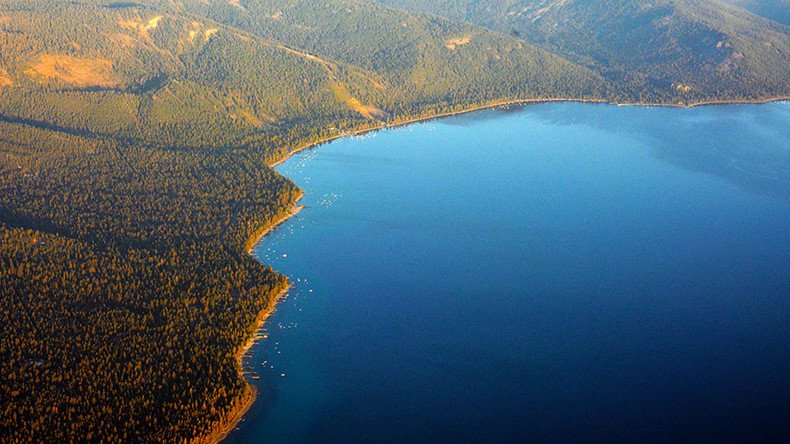Wintry storm drops 4.3 billion gallons into Lake Tahoe over 24 hours

Wintry storms battering the West Coast poured 4.3 billion gallons of water and snow into Lake Tahoe in just 24 hours. More storms are expected in the drought-stricken region, but seven or eight more storms are needed to get the lake back to its rim.
“This is the kind of storm we’ve been missing for the last four years of drought,” Douglas Carlson, spokesman with the California Department of Water Resources, told The Associated Press. “This is the kind of storm we would need a lot of to start digging our way out of the drought.”
Lake Tahoe is situated in the Sierra Nevada mountain range and straddles the borders of Nevada and California. It is the largest alpine lake in North America and is fed by 63 tributaries. It’s a major tourist attraction, home to ski resorts and summer outdoor recreation.
Snow covers the piers in Lake Tahoe. #laketahoe#snowhttps://t.co/XJRkuUUgcSpic.twitter.com/UwfNJFmAuz
— Postcards To Seattle (@pstcrds2seattle) December 17, 2015The storm hit the Lake Tahoe region Monday, dumping water and snow into the lake and raising it almost two inches, according to Tim Bardsley, a National Weather Service hydrologist in Reno. Almost 80 percent of the rise was due to rain and snow falling on the lake itself rather than on feeder streams.
“We would need seven or eight more (storms) of that magnitude to get back to the rim,” Bardsley told USA Today. He said fewer might be needed if there is a lot of snowmelt.
“[We] need six more feet for a full lake – that would take an enormous amount of snow and rain.”
Sierra Nevada didn’t receive its projected three feet of snow – it got a foot or two instead – but the white stuff was a delight to ski resort property managers, skiers, snowboarders and sledders.
“It is full-on winter out here,” Jerry Bindel, general manager of Aston Lakeland Village vacation condominiums in South Lake Tahoe, told AP. “This is great news all the way around.”
Cool video of a bear playing in the snow near Lake Tahoe by Lauren Hodges 🐻⛄️ https://t.co/TmhBU6oj59
— US Dept of Interior (@Interior) December 16, 2015Californians had been told to prepare for an El Nino of ‘Godzilla’ proportions, with the weather pattern predicted to bringing harsh storms. With the area being so arid, concerns were that it will be difficult for water to precipitate into the ground, leading to floods and mudslides.
The El Nino weather pattern is partly linked with the warming of surface waters in the Pacific Ocean near the equator, which drives warm air west to east and keeps colder air from the Arctic at bay. That weather effect has made the Northeast unseasonably warm, brought the risk of tornadoes to the South, and delivered much snow across the West.
The National Weather Service has also issued a high-surf advisory for many coastal areas, with peak waves around 30 feet in locations like Santa Cruz, California.
Startling viral video shows lake drying up in drought-ridden California http://t.co/C9NsmsdB5Npic.twitter.com/zcZWWpNaK6
— RT America (@RT_America) October 1, 2015Another storm is expected over the weekend which could bring another 2 feet of snow to parts of the Sierra Nevada. Snow, not rain, will determine when the drought will end. In a normal year, melting snow from the Sierra replenishes the reservoirs in summer and provides California with water that can’t be stored safely behind dams during winter.
A true picture of the snowpack’s size won’t emerge until early April, when it traditionally is at its peak.
“The fact is, it’s going to take the entire winter season to know if we’ve achieved enough precipitation to make a meaningful dent in the drought,” said Doug Carlson, a spokesman for the Department of Water Resources told the Sacramento Bee. “We would really like to see what the snowpack is like April 1st.”
11 trillion gallons of water to relieve #California drought - #NASAhttp://t.co/CBQOzlZd00pic.twitter.com/YhQHGkNK8H
— RT America (@RT_America) December 17, 2014Last April was when California Governor Jerry Brown famously stood in a dry Sierra meadow and ordered the first mandatory urban water cutbacks in California’s history.












